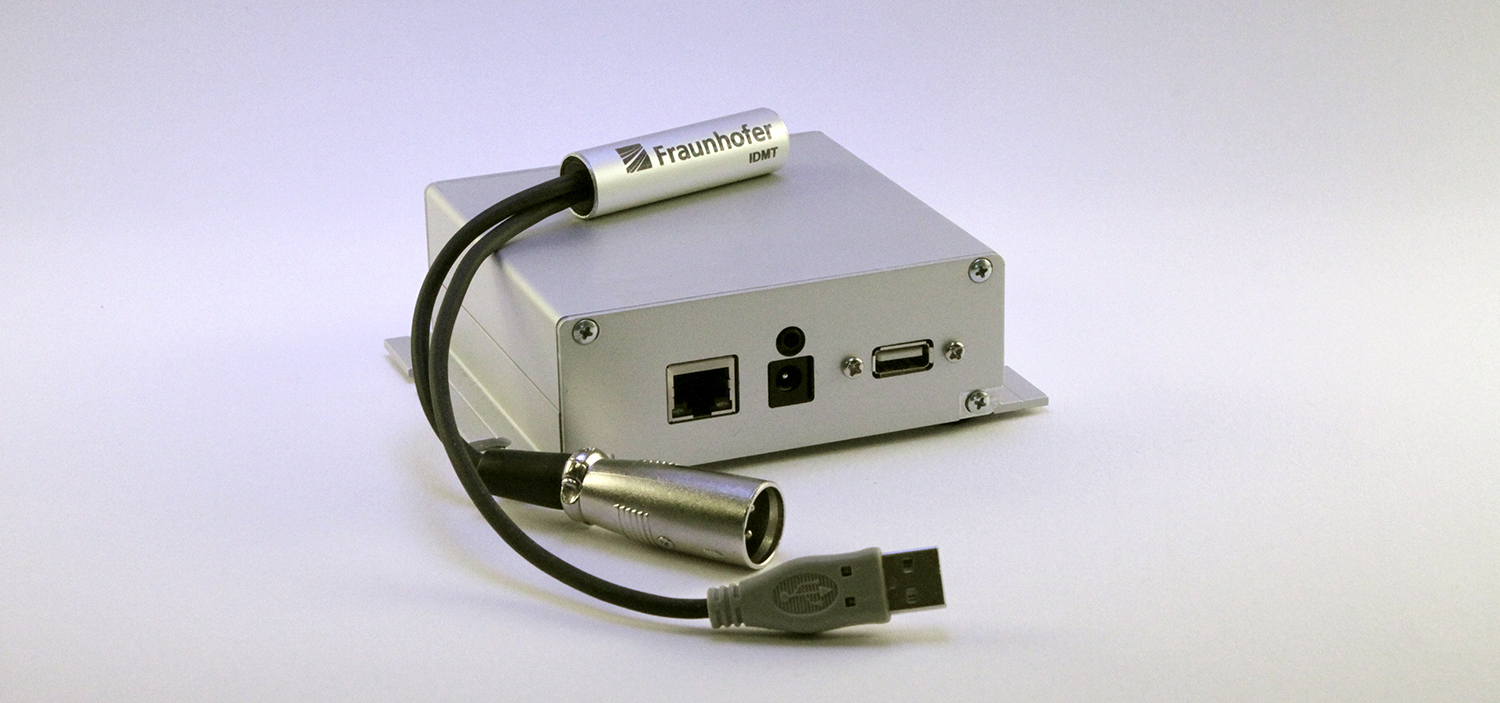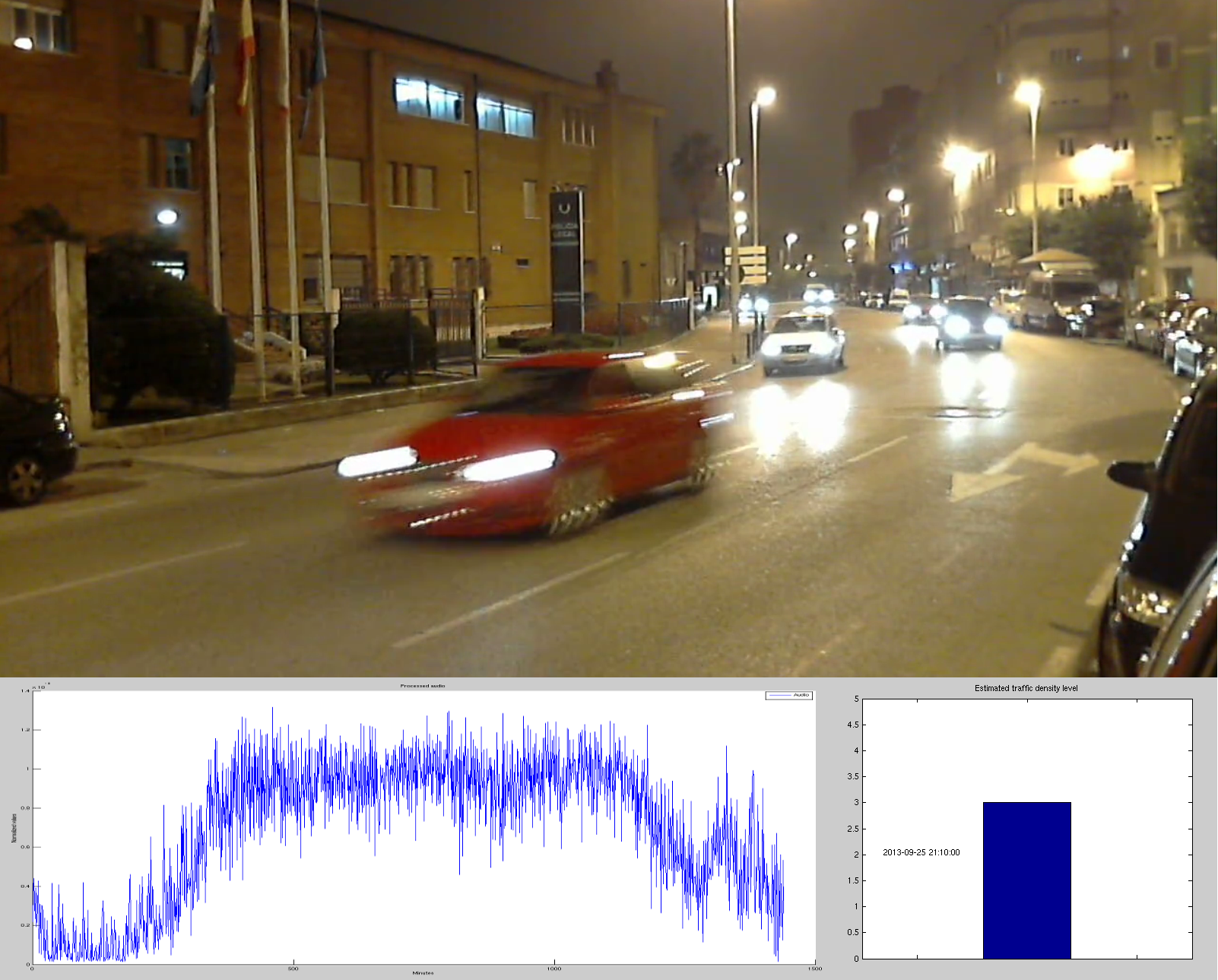Acoustic monitoring in Smart Cities - Research project EarIt
How can acoustic data be collected in networked buildings and cities and used for applications in the areas of energy efficiency, security and transport?


Scientists at the Fraunhofer IDMT investigated this question as part of the two-year European research project »EAR-IT«. The project also examined the question of whether and under which conditions people welcome the use of acoustic technologies in their living environment. Two test systems from the project Future Internet Research & Experimentation (FIRE) were available for this project: the »HobNet« in a building of the University of Geneva, Switzerland, for applications in an office complex, and the »SmartSantander« project in Santander, Spain, with large-scale networked outside areas.
Energy efficiency and security in office buildings
The number of people who are currently present in a large building is an important reference variable for energy-efficient control of lighting, ventilation and heating. In the Ear-It research project, the utilization of the building at the University of Geneva was determined by means of acoustic sensors, and the air conditioning system was adjusted correspondingly. The lighting in the offices was also only switched on when the sensors detected that there were employees present in the rooms. The Fraunhofer scientists used the networked microphones and computer-based processing technology to detect acoustic events in the offices such as doors closing, keyboard clacking noises or the sound of a coffee machine grinding coffee beans. If the processing unit detected a call for help, an alarm was automatically forwarded to the security service. The employees were also able to control the heating and lighting systems by voice command via the microphones.
Traffic optimization in the Smart City
A sensor network covering a number of street areas was deployed in the Spanish city of Santander twelve years ago as a test bed for Smart City applications. For the Ear-It project, the Fraunhofer scientists developed small, inexpensive signal processing units, so-called »Acoustic Processing Units« (APUs), which were integrated in the existing networks of the test bed. These processing units are able to directly process acoustic data and forward only the information that is relevant for defined evaluation purposes. For example, this makes it possible to acoustically measure the traffic volume on one of the main streets and then control the traffic light system on the basis of this information in order to reduce the noise level in this area of the city. In addition, detection algorithms were used for acoustic detection of sirens, thereby allowing determination of the position of emergency vehicles and automatic adaptation of the traffic light signals in an emergency.
Acceptance in the population
A research project conducted by the Technical University of Lulea, Sweden, investigated the question of whether acoustic monitoring is accepted by the population. The study with one thousand participants from five countries showed that the acceptance for acoustic applications in the area of security is significantly higher than the approval for surveillance by video cameras. A prerequisite for this is that citizens are informed that data is being collected in public spaces. People also want to give their approval for the purpose for which the collected data is used.
Hardware development for wireless and cable networks
The Fraunhofer IDMT developed the hardware and software for acoustic data recording and processing in the Ear-It project. The goal was to develop robust signal processing methods and inexpensive hardware suitable for easy integration in existing cable-based or wireless sensor networks. The core of the »Acoustic Processing Unit« (APU) is an embedded board that allows complex signal processing algorithms to also be applied to wide-band, high-resolution audio signals.
 Fraunhofer Institute for Digital Media Technology IDMT
Fraunhofer Institute for Digital Media Technology IDMT